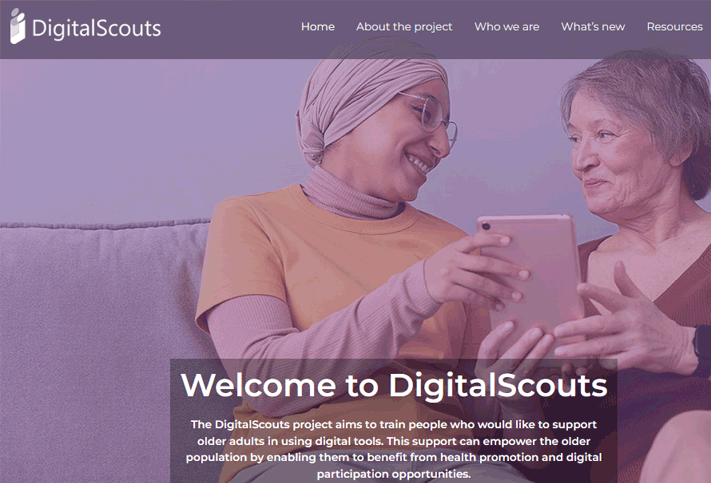
| Short descriptor of good practice |
| The DigitalScouts project builds on these aspects by developing an educational offer that qualifies “digital scouts” to support older people in the use of digital tools, so that they can benefit from the opportunities of digitization for social, cultural, and political participation and in the area of health promotion. |
| Type of setting where good practice is delivered |
| Facilities equipped with technology infrastructure, including computers, tablets, and internet access, to facilitate hands-on learning (classrooms, meeting rooms, community spaces,…) |
| Time Frame for delivery of good practice |
| The time frame for delivering the good practice outlined in the FAITh project would depend on various factors, including the scope of the initiative, the complexity of the objectives, and the resources available. However, general suggested time frame is as follows: Project Planning and Design (3-6 months), Curriculum and Training Material Development (2-4 months), Trainer Recruitment and Qualification (1-2 months), Infrastructure Setup (2-3 months), Pilot Phase (3-6 months), Full-Scale Implementation (Ongoing), Community Outreach and Recruitment (Ongoing), Blended Learning Sessions (6-12 months). |
| Type of learner the best practice is supporting |
| Senior Learners (Older Individuals) – This group consists of individuals who are in the senior age demographic, typically aged 55 and older – Seniors who may not be familiar with or proficient in using digital tools and technologies Individuals who may face barriers, such as the digital divide, limiting their access to and use of digital applications. |
| Resources used as part of good practice |
| Development of a comprehensive curriculum covering essential digital skills and topics relevant to the needs of older learners: ● Digital learning curriculum ● Training materials ● Online learning platforms ● Technology infrastructure ● Community spaces |
| Aims and objectives of good practice |
| The practice aims to meet the challenges of the digital transformation in society and help to close the still existing digital divide with ever increasing negative impacts for excluded persons. |
| Evidence as to why this was considered good practice |
| The project focuses on a specific and vulnerable demographic—adults aged 55 and older—who may face digital marginalization. Targeting a specific group allows for tailored interventions and a more effective impact on addressing digital disparities. ● Targeted approach ● Innovative peer-to-peer mentoring ● Holistic skill development ● Promotion of lifelong learning |
| 3 Key learning Principles that were used in this good practice to support senior learners |
| 1. Blended learning for trainer education 2. Community engagement and support services 3. Health promotion through digitization |
| Any additional learning that we can take from this good practice example |
| Lots of resources, tips & tricks, examples of good practice are reachable on official web page of the project: https://digitalscouts.eu/ |
| Any Additional Information |
| / |
